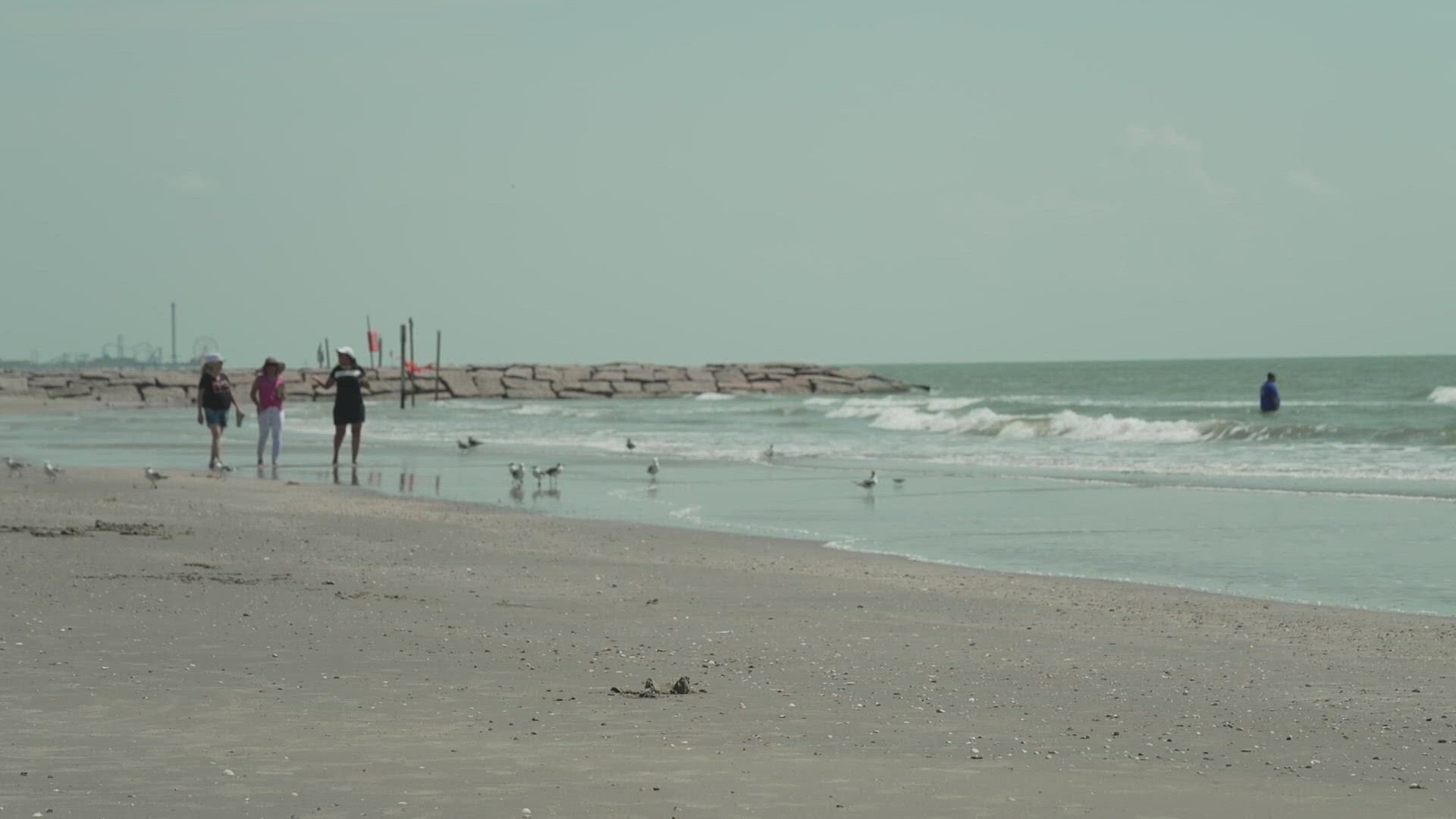HOUSTON — Some of the most popular beaches in Texas have a dirty problem.
KHOU 11 Investigates analyzed data from the Texas General Land Office and found that 91% tested positive for potentially unsafe levels of fecal contamination this year as of July. That is nearly double the national average of 55% in 2022, according to Environment America.
In Galveston, every beach, more than 20, made the list.
Locals and out-of-towners flock to Galveston Island every summer to take in all the beaches have to offer.
“The weather is always fantastic. The restaurants are great. We just enjoy staring out at the ocean. The peacefulness, nature, the warmth of the air,” David Johnson said.
“(My wife and I) have been coming down for a lot of years. We enjoy just sitting and watching the water, listening to the surf come in,” Cecil Jones said.
“To just relax and talk with friends,” Tanya Perez said.
“Every once in a while, she’ll (daughter) come play in the sand, but she loves the water,” Angela Lindsey said.
But some days, what is in the water could make swimmers sick.
Jon Burns with Galveston Public Health/Texas Beach Watch is tasked with collecting water samples along Galveston beaches.
“The people who analyze all this data use that to help make determinations as to what may or may not be causing high bacteria. It allows the people in the offices to really build a big picture of what’s happening on the beach and try to figure out why we have spikes in bacteria,” Burns said.
Burns said the bacteria typically comes from human and animal waste and sewage system overflows. Swimming in contaminated water can cause gastrointestinal illness and bacterial infections in swimmers.
“We test everything in the county once a week during the summer season. If something tests high, we come back and test it every day until it’s good,” Burns said.
A KHOU 11 analysis of Texas General Land Office data found 57 of 62 Texas beaches saw at least one unsafe test day this year, meaning contamination was above the Environmental Protection Agency’s conservative Beach Action Value.
In Greater Houston, the worst offenders were Palacios in Matagorda County, where samples tested above the EPA threshold on nearly half the days, followed by Texas City Dike, Sylvan Beach Park in Harris County and Port Bolivar. Quintana in Brazoria County and Galveston Seawall at 61st Street, where KHOU caught up with beachgoers, rounded out the top locations.
“It’s scary because you don’t really know what there could be,” Lindsey said.
Beachgoers are warned about water quality. An orange flag or sign means bacteria is high. However, Texas’ threshold is higher than the EPA’s. The EPA suggests states set a Beach Action Value of 60 cfu/100 ml of enterococci to alert swimmers that water is contaminated, but it allows states to choose another maximum that would trigger advisories. Texas and most coastal states use an older threshold of 104 cfu/100ml. Florida is the one exception on the Gulf Coast. It uses a threshold of 70 cfu/100ml.
So, even on days when there is not a flag flying on Texas beaches, fecal levels may be potentially unsafe.
“Those signs let people know that, hey, this is a place where we test and when there’s high bacteria, the signs are a warning advisory that there could be bacteria in these waters,” Burns said.
Beachgoers say they would like to see a more proactive approach to combatting contamination.
“I wish somebody would do something about it,” Jones said.
Environment America is a research and policy group that tracks water safety. The non-profit put out a swimming report for 2022. They found 90% of Texas beaches had potentially unsafe fecal levels, about the same as this year’s 91%.
“It says we still have a serious problem with water on our beaches, and it’s unacceptable. In this day and age, we shouldn’t have to worry that there’s going to be a sewage overflow going into the places that we take our families to have a good time and have to worry somebody might get sick,” Environment America Executive Director Luke Metzger said.
A new federal law passed in 2021 provided money to clean up beaches but, Metzger said, it is not enough.
“The bipartisan infrastructure law that just passed Congress a few years ago made a historic investment in our clean water infrastructure and providing loans and grants to states all around the country to start to address this problem in a serious way. Unfortunately, while that’s both a historic level funding, it’s still just a fraction of what’s needed,” Metzger said.
Metzger said, for the most part, it is safe to swim at Texas beaches. But it is always a good idea to choose beach days wisely.
“When there’s a hard rain, it’s probably a good idea to avoid swimming at the beach for at least three to five days after because we know that the sewage outflows are going to be putting out a lot of runoff pollution into the waterway,” Metzger said.
Beachgoers we spoke to say they are going to be more mindful of environmental warnings.
“I will look into that more now,” Lindsey said.
“You’ve raised our awareness. We just dip in to cool off. I’m not scuba diving in it just yet,” Johnson said.
The only beaches in Texas that did not test positive for fecal bacteria this year as of July were on South Padre Island.
The latest test results are updated daily at texasbeachwatch.com, where beachgoers can sign up for email alerts.

